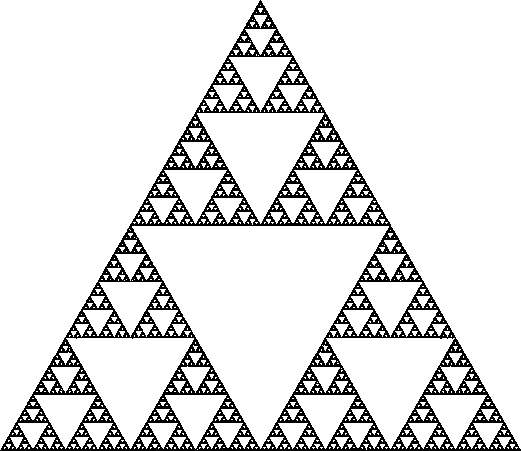Pascal's Triangle has it's roots far before Blaise Pascal arranged it in the trangular form we all know (and love?) today, but what actually is Pascal's Triangle, why's it useful and what are it's properties?
The first 13 rows of the triangle are listed above, but what is there that we can notice? Well each number is the sum of the two directly above it, and that is the key to constructing a Pascal Triangle of your own. Other than creating some very interesting and intriguing patterns, some of which I will explain...
Line one is the diagonal line of ones, line two is the counting numbers. The next line (the third line) is the triangle numbers. Here's where it gets even more fascinating, and quite frankly beautiful; if you shade the even numbers with one colour and the odd numbers with another colour you end up with Sierpinski's Triangle, which looks like...
And as you can see, it's actually quite a wonderful piece of art, surely this is the epitome of eloquence within Maths?
For the more Mathematical minded among us you may find it more eloquent that each row of the triangle adds to be 2^(n-1), n being the row number. Another use of Pascal's Triangle? Showing the coefficients in the binomial expansion. Say we choose (x+1)^4, if we look at Pascals Triangle we can see that the coefficients will be: 1 4 6 4 1. The actual expansion is; x^4+4x^3+6x^2+4x+1, can you also see a pattern here? But that's another post for another time...
This surely is the definition of beauty within Maths, how intricate a very simple piece of Maths can become.
I'd like to see what you can do now though, show me your best Pascal Triangles or Sierpinski Triangles in the comments or tag me in a post on my twitter: http://twitter.com/#!/EloquentMath



No comments:
Post a Comment